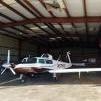Single 10” G3X with Garmin EIS in a turbo
-
Members Online
- banjo
- Lois
- ajudson
- DanM20C
- dierk reuter
- Guillaume
- Greg Ellis
- TangoTango
- phxcobraz
- ReboTim
- ROPDown
- TCC
- Mreed420
- joesmoejr
- richardbrochu27
- MikeOH
- ad5ut
- Yan X
- mhrivnak
- Larry
- Nico1
- Jim Peace
- ZentRose
- hazek
- kortopates
- Hradec
- Schllc
- eman1200
- Paul Thomas
- hammdo
- 201Mooniac
- exM20K
- jwarren2
- moodychief
- redbaron1982
- Hank
- MatthiasArnold
- Peter T


Recommended Posts
Join the conversation
You can post now and register later. If you have an account, sign in now to post with your account.